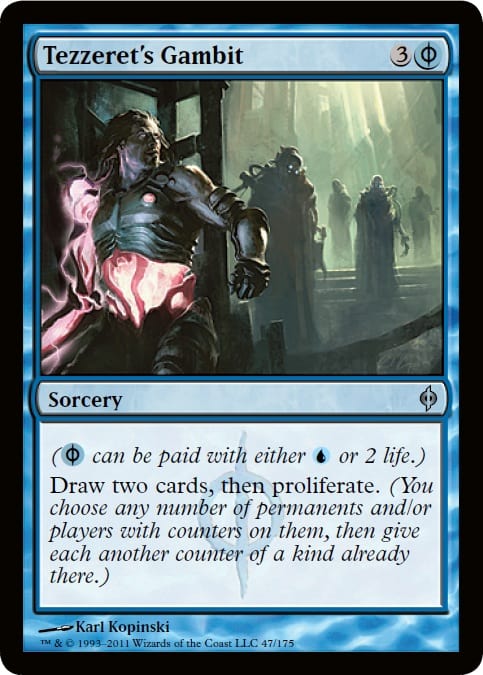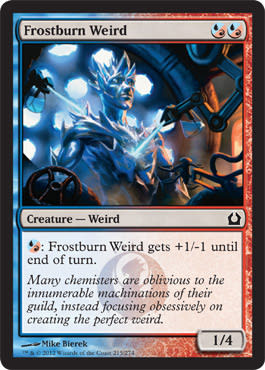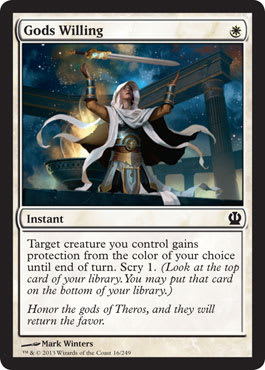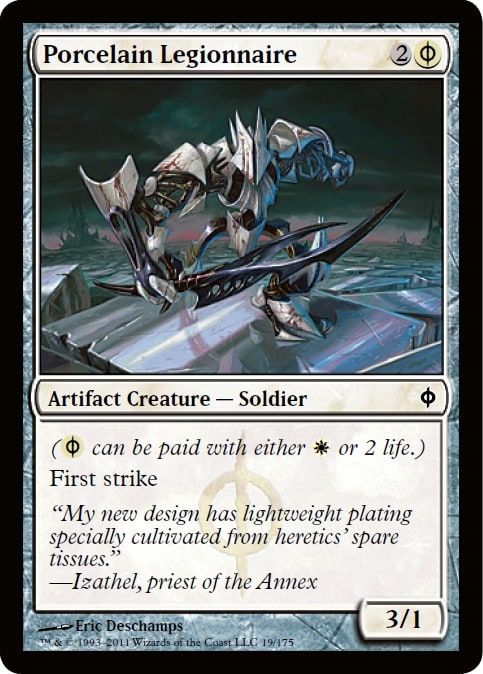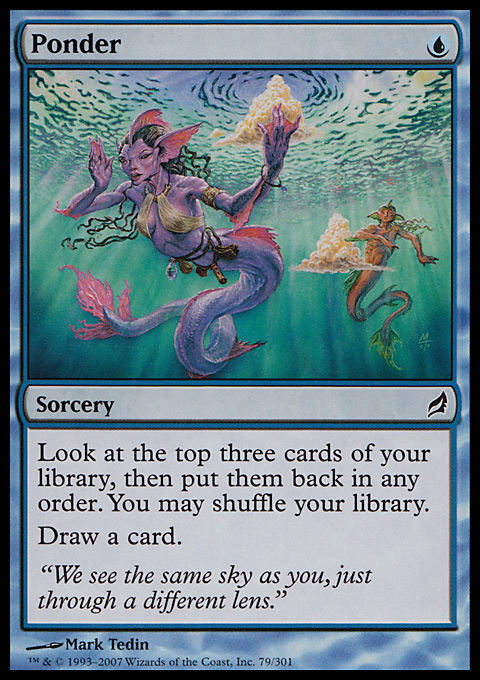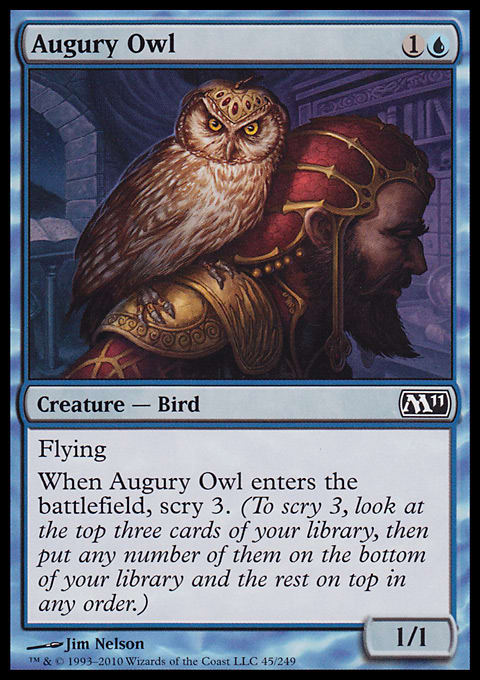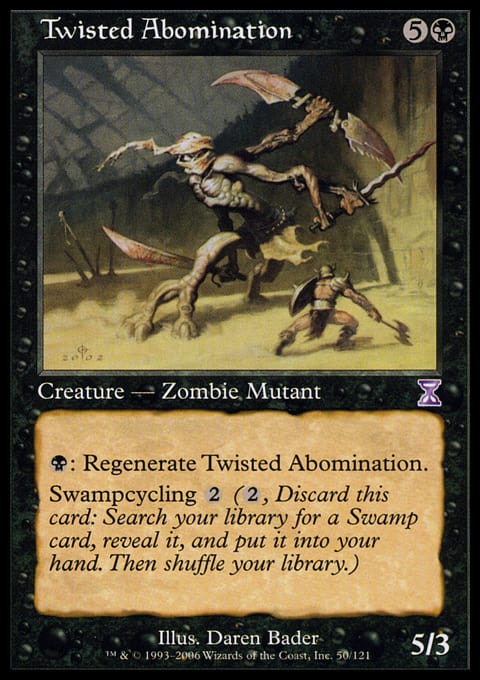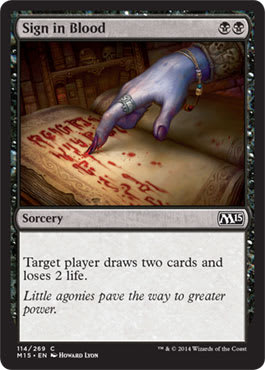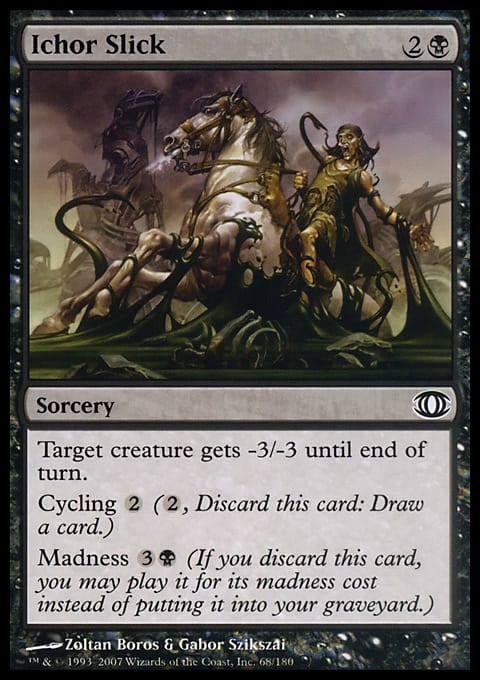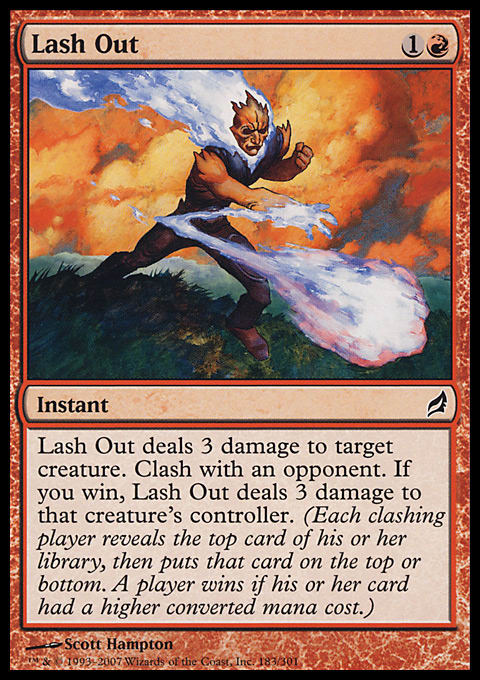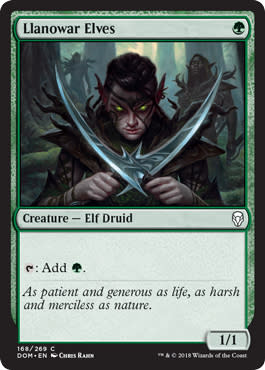When I first started looking for ways to improve my Pauper Cube, I started by focusing on the different color pairs, also known as the guilds. I consider these to be the backbone of my Cube since, the vast majority of the time, decks are going to be two colors. Sure, there will sometimes be a three-, four-, or even five-colored deck rampaging through opponents, but overwhelmingly, decks are adhering to two points on the spectrum. Early in the process, I was looking for ways to make the gameplay a better experience, and I stumbled upon the fact that the rate of removal spells was rather high. By subsequently reducing the number of kill spells in my Cube and being more selective of which ones made the cut, the gameplay quality has increased.
The next phase of the development is going to focus on making sure things continue to run smoothly.
Including smoothing mechanics is a necessity for a healthy and repeatable Draft environment. Before going further, it is important to try to explain what smoothing mechanics are and how they fit into different sets. Smoothing mechanics are elements of the cards that make it easier to cast one’s spells. They can dig you deeper into the deck, toward more lands, they can find the lands directly, or they can reduce a reliance on colored mana symbols. Some examples of these mechanics include:
- Cycling/landcycling
- Scry
- Hybrid mana
- Phyreixan mana
- Morph
- Cantrips
- Clash
These are just a few ways to make the games flow. This also neglects one of green’s key mechanics in ramp (which counts, but which is found almost entirely alongside Forests), but it most certainly counts. Most modern blocks will include one way to make sure that games move forward. The entire point of playing Magic is to actually play (and yes, attempt to win) a game of Magic. Losing to color or mana screw is not the best way to have a good time, so mechanics that can ensure people are actually able to cast their spells go a long way toward the Platonic ideal of fun.
It makes sense, therefore, that many sets recently have had some noise made about the elements that made the games go. Return to Ravnica block leaned on hybrid to help ease the strain of two-colored cards, but it needed the heavy lifting of the Guildgates to help the flow (and even these were not enough in full-block Draft with Dragon’s Maze). Theros relied on the flavorful returner scry to help keep lands coming in a format in which many key cards came with alternate costs (bestow and strive, for example). Now in the age of Khans of Tarkir, we have access to the Jungle Hollow cycle of lands as well as to the wedge tri-lands, Banners, and morph. Morph is a subtle, yet fantastic execution of the fixing mechanic allowing for actual investment in board presence while also easing color requirements. I have been enjoying Khans Draft, and that is due in part to the flexibility afforded by the mana available and the ability to use my creatures as 2/2s shrouded in draconic magic.
It were these Khans Drafts that led me to examine exactly how smoothing was working in my Cube, specifically in relation to the guilded pairs. As my Cube draws on the entire history Magic, I also want to start examining if certain mechanics work better than others (I have a feeling that those that read, “Draw a card,” will top the power rankings) and if certain colors need help.
For the purposes of this exercise, I am going to limit my definition of a card that aids smoothing to one that can be cast or otherwise used by turn three. A card like Read the Bones can help advance a game state to the comfortable middle, while Fill with Fright helps to cement an advantage in that same area. This is an arbitrary cutoff, but one with which I am comfortable. I used turn three as the line since it seems to be a sweet spot; it’s more than the average cycling cost, and it hits the same point on the curve as morph. A card also has to have an immediate impact. Omenspeaker’s impact can be felt once it is cast—Sigiled Skink, not so much.
So, how do the colors stack up when it comes to making things run like a well-oiled machine?
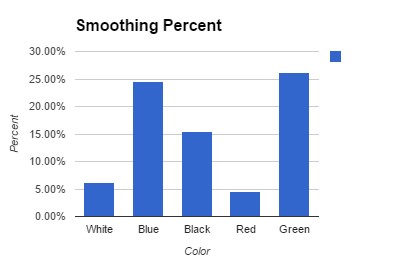
Well, two colors seem to be well above the curve. How does this play out?
White
White has a relatively meager four cards that fall under smoothing: Gods Willing, Judge Unworthy, Aven Liberator, and Porcelain Legionnaire. True to form, these cards are all combat-related. In order to make use of these white smoothers to enable solid footing in the game, one must be attacking. This makes white a solid choice as a base color, but not one that can enable multiple splashes. Rather, white is best suited to be either a strong base color or a supplement to another strategy. No matter the role, white is rarely going to be responsible for making sure the game progresses on any axis that is not directly influenced by the red zone.
The best way to reduce white’s strain on a mana base would be to add cards with morph. Daru Lancer and Wingbeat Warrior are both cards that can win a combat phase. If the remainder of Khans of Tarkir block provides other mysterious warriors in white, they will warrant consideration almost immediately.
Blue
When you are powered by Islands, you are able to rip through a deck, from obvious all-stars like Ponder and Preordain to the less impressive Augury Owl and Alchemist's Apprentice. Over 23% of blue’s cards can be considered to have a smoothing mechanic. Part of this is the fact that blue has quite a bit of spells that feature the text, “Draw a card.” The other element here is that, because I have emphasized the spell-centric nature of blue, the spells included have to be able to keep up with the creatures present in the Cube; including cantrips is a great way to accomplish this feat. As such, blue decks often have a far easier time hitting their land drops early and often. More than that, the cards that sand the edges in blue can also dig toward heavy hitters late. Moving forward, it may be correct to remove some of the spells that make blue operate like a well-cared-for engine.
Black
At just over 15% of all black cards, this color hits the sweet spot. Twisted Abomination and Sign in Blood are about as black as a card can be, and they still fit the established requirements. Ichor Slick also counts here even though cycling it without paying the madness cost ranks high on the Feels Bad scale. The prevalence of black’s fixing makes it an ideal color to be a base or a supplement. The lack of saturation of makes it hard to do a three-or-more-color, base-black deck. Black hits the sweet spot, and I would want to keep its smoothing cards at around 15% moving forward.
Red
Red features only three fixers: Lash Out, Spin Engine, and Skirk Marauder. This might seem low, but considering how powerful red’s burn can be, it probably does not need to be much higher. The better red’s digging ability is, the stronger its direct damage can become. Since the strength of Lightning Bolt is already rather high, pushing the number of cards like Solar Blast or Canyon Lurkers in this Cube may do more to hinder gameplay than to make it better. Red works just fine either as a base color or in a support role, so the goal in the future should be to look for better spells, period—not ones that can make draws better.
Green
On the back of Rampant Growth, Llanowar Elves, and Borderland Ranger, green leads the way with over 28.5% of all cards helping to make the game move. Mana Elves count for green since they can jump the color to its key drops. The cards that help green deal with the rough spots can also fetch other colors of mana, making green uniquely situated as the best locus for a three-plus-color deck. More than this, green’s cards often add permanents to the battlefield, making the ride go easier while also bringing you there faster. And the number should stay high. The ability to ramp mana and fix colors is an important role for green in this Cube. As such, cards of this nature are going to find their ways in and help make green a strong foundation. Since this Cube wants to encourage two-color play, these cards are not going away anytime soon. In this Cube, it isn’t just easy being green, it’s almost encouraged.
The next step in my Cube’s evolution approaches. While gameplay is fantastic, there are attributes I can examine to improve the way the colors play against each other. White and red could stand to find a few more cards that help the game move while blue (shocker) could stand to shed a few. I am excited at the prospect of morph in the latter elements of Khans of Tarkir block, but I am eagerly awaiting to see what Wizards of the Coast unleashes in the future. If the recent past is any indicator, it should make for calm seas on the drafting front.
















